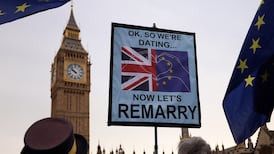It has been clear for some time that divisions on the governing council of the European Central Bank (ECB) about the future course of interest rates are growing. This has led to confusing messages being sent to the markets and the public, with some governors calling for a succession of future interest rate rises and others supporting a more cautious approach.
Despite the latest nervousness in financial markets following the collapse of Silicon Valley Bank (SVB), the ECB is likely to push ahead on Thursday and increase interest rates by a further half of a percentage point. This will bring the total increase since last summer to a hefty 3.5 points.
However, the key focus will be on what it says about future rate hikes. The ECB has tied itself in knots over recent months, first saying it would take a “meeting by meeting” approach and offer the market no guidance on future interest rate trends and then starting to specify what could be anticipated.The different messages coming from various governors make matters only more confusing.
The pace at which interest rates are increased are now material issues for businesses and households and they deserve a clear message from the ECB. The central bank cannot box itself into a corner when inflation trends are unknown. But its governors need to agree a fixed public message and stick to it. If they are going to have a row, have it in private.
READ MORE
Given the uncertain inflation outlook and the recent falls in wholesale energy prices, a reversion to the message that the ECB would decide “meeting by meeting” would seem to make sense. This does not imply going soft on inflation. But it does mean seeing how an uncertain situation pans out and how the increases so far are impacting. And it means everyone sticking to the script.
The stakes have been raised by the collapse of SVB and the market nerves in its wake. There is no immediate reason to expect European banks to get into trouble – assuming that regulation has been conducted properly, stress testing all aspects of bank balance sheets. But what the problems in the US do show are the sometimes unpredictable impacts of the rapid rise in interest rates, particularly following years when the cost of borrowing money was exceptionally low.
Central banks may feel that this is a normalisation process, but that does not mean it is painless or risk free. The quicker central banks move, the more the risk that other unforeseen stresses appear in the financial system.
US figures this week show its Federal Reserve Board now caught deciding its next move between a financial sector under pressure and a still-high inflation rate. The weeks to come are likely to test the ECB as well. Above all now, its governing council needs to agree a clear and unified message. And stick to it.











